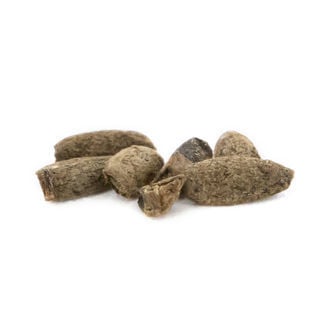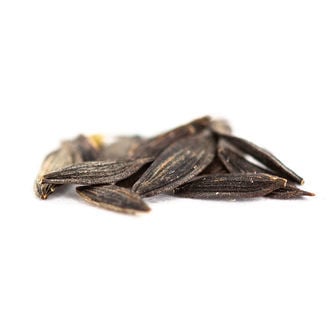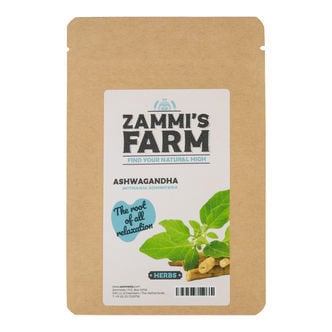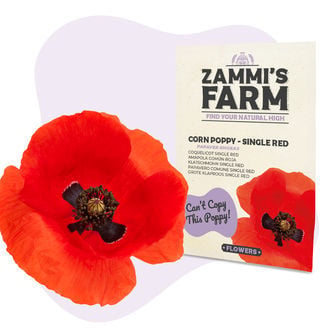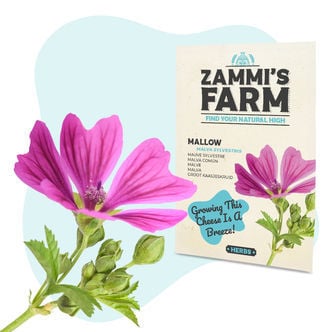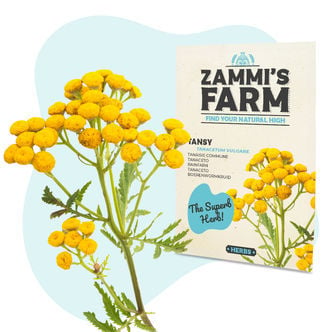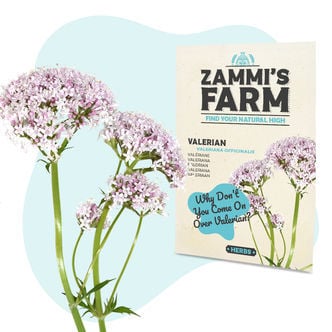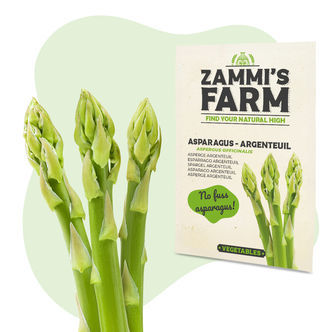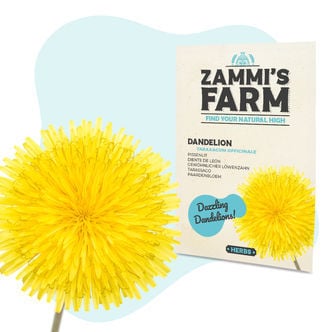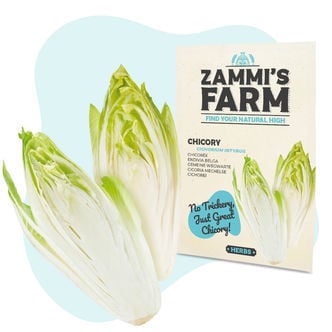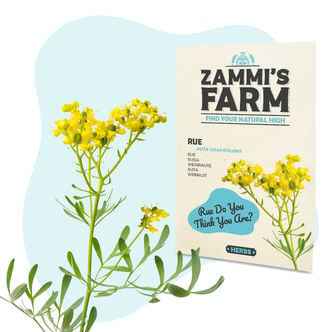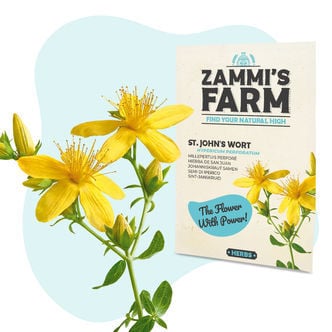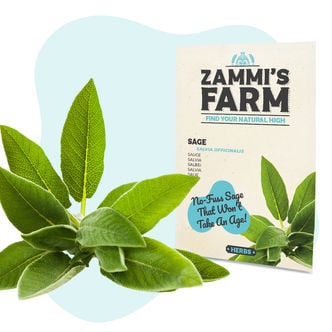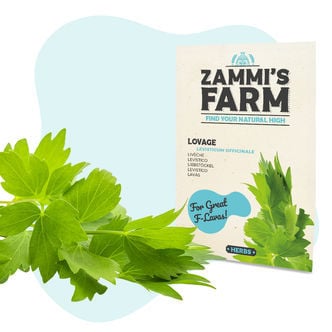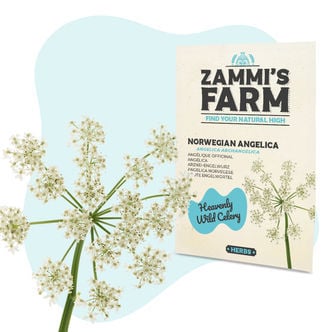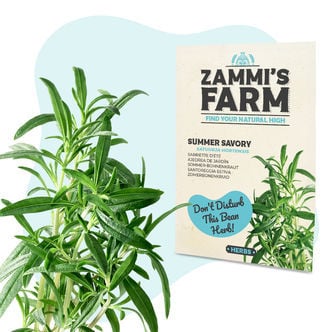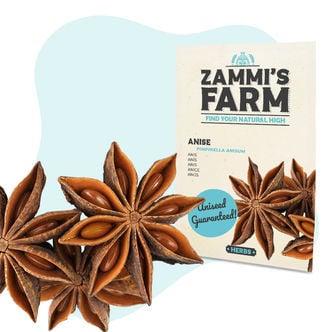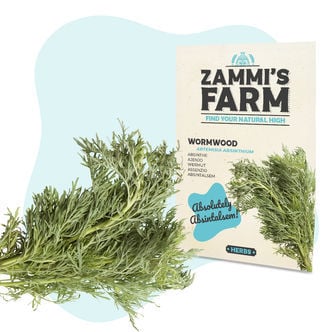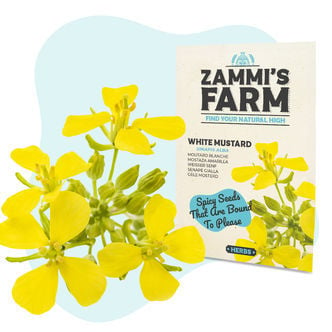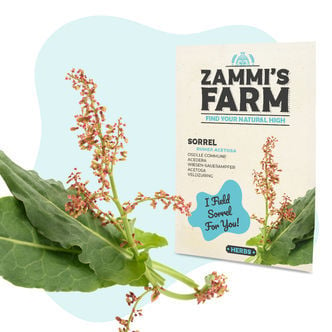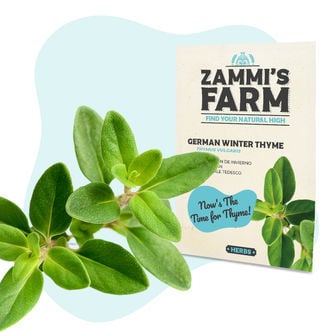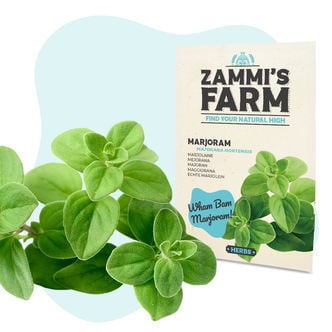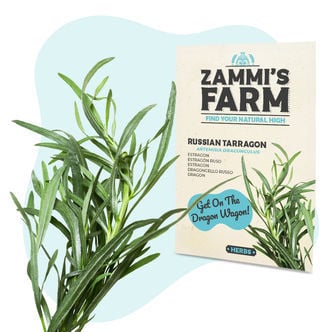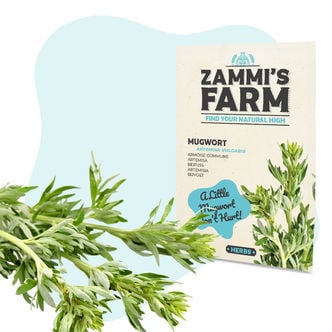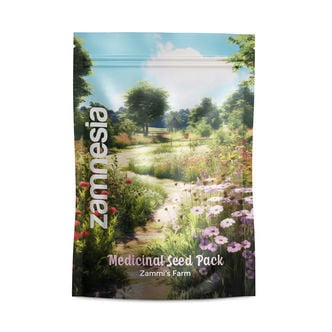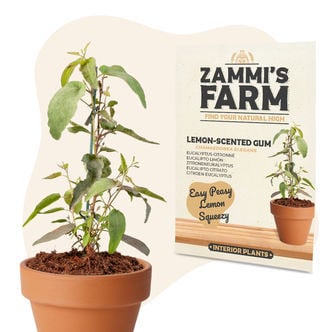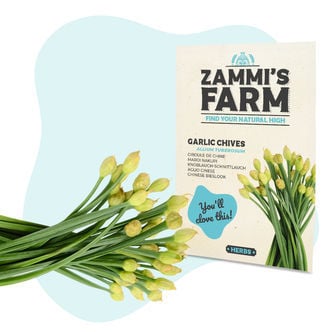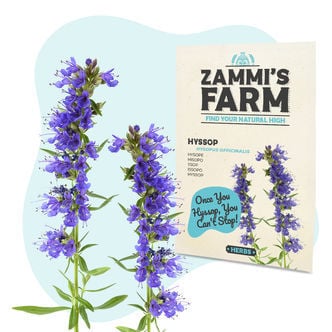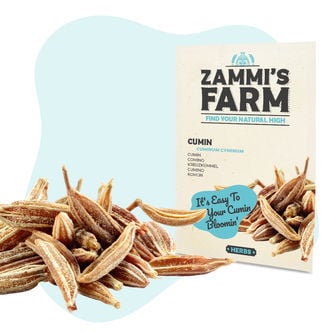Wellness Plant Seeds
Before ibuprofen and antibiotics, our ancestors derived remedies from the plants growing around them. Today, many of these practices are still very much alive—and not just among indigenous communities. At Zamnesia, we've collected seeds from all over the world to give health-conscious gardeners like you the tools they need to cultivate their own botanicals at home. True to Zamnesia quality, all of our wellness plant seeds are shipped discreetly and in sealed packages to preserve their freshness and maximize germination rates.
Klip Dagga (Leonotis nepetifolia) Seeds
Native to Africa and Southern India, klip dagga is a colourful plant with a unique appearance. Fortunately, it's also pretty simple to grow. Sow the seeds indoors at the end of April in moist soil, and keep the same conditions until they germinate. Then, move them outside so they can flourish. Provide them with plenty of light and warmth, and harvest leaves and flowers when ready.
Wild Lettuce (Lactuca virosa) 20 seeds
Wild lettuce (Lactuca virosa) thrives in cool and cold conditions and produces edible leaves throughout most of the year, even into winter. Plus, it's full of nutrients. Get growing!
Ashwagandha (Withania somnifera) 20 seeds
Ashwagandha (Withania somnifera) is a shrub native to India, and it has been used for many years in the Ayurvedic tradition. Attractive and easy to cultivate, why not try growing it in your very own garden?
Corn Poppy 'Single Red' (Papaver rhoeas) Seeds
Add some colour to your garden with these bright red poppies. Sow seeds in late spring and watch them flourish. Come June–September, you'll be met with beautiful deep red hues. Low-maintenance and accessible to all levels, just give them plenty of light, warmth, and water.
Mallow (Malva sylvestris) Seeds
The mallow, or Malva sylvestris as it's otherwise known, is a plant that's commonly found in the warmer climes of Iran and North Africa. However, now you can grow this colourful companion at home. Sow these seeds in April, and you'll see that come September, you'll have some fully formed flowers at your disposal. Mallow is a particular favourite for use in soups.
Tansy (Tanacetum vulgare) Seeds
Also known as bitter buttons, cow bitter, and golden buttons, the tansy is a perennial, herbaceous flowering plant that's bright, colourful, and bound to add vibrancy to any garden. Thanks to its resilience, it can be cultivated in a wide range of environments. Provide full sun and well-drained soil, and it'll flower throughout summer, at which point it can be used in cooking.
Valerian (Valeriana officinalis) Seeds
Valerian is a hardy plant that thrives in full sun and half-shade in almost all soils. Plant in an outdoor seedbed around April-May, prick out once in June, before transplanting them in autumn to their final position in your garden. The extracted juices of valerian root can be used for making home concoctions, while its leaves make for great additions to salads.
Asparagus 'Argenteuil' (Aspergus officinalis) Seeds
Asparagus plants might take time to get to harvest, but they are well worth the wait. Plant asparagus seeds in rows directly in nursery seed beds 4 weeks before the Ice Saints in sandy soil. Seeds can take 3 weeks to germinate, and young plants should be kept in nurseries for 1 year before moving them to their final spot. Transplant mature plant crowns into trenches, adding soil regularly.
Dandelion (Taraxacum officinale) Seeds
Taraxacum officinale, aka the dandelion, is a herbaceous perennial plant that's perfect for all kinds of growing setups. Allow the beautiful yellow colour to brighten up your life. Sow in spring, and allow plants to flourish over the summer months. Provide well-draining soil and plenty of light and warmth, and you'll be rewarded with a plant boasting numerous culinary and herbal uses.
Chicory (Cichorium intybus) Seeds
Sow chicory seeds in spring, after the last frost, in a spot with at least 6hrs of direct sunlight. Take care not to bury the seeds deeper than 0.5cm beneath the soil. Seedlings will sprout after 2–3 weeks in moist (but not wet) soil and should be thinned to leave roughly 30cm between plants. Harvest fresh leaves and blanched buds to eat raw. Dried, ground chicory roots can substitute coffee.
Rue (Ruta graveolens) Seeds
Ruta graveolens, or simply rue, is very hardy and can tolerate poor soil fertility and droughts. Plant established rue specimens in full sun and water sparingly, especially in dense soils. Use mulch to insulate rue plants during winter, and cut back plants entirely to their old wood in spring to encourage new growth. While previously used in various cuisines, rue is best grown as an ornamental.
St. John's Wort (Hypericum perforatum) Seeds
Hypericum perforatum, or St. John's wort, is an easy-to-grow perennial with beautiful star-shaped flowers. It grows best in full sun or partial shade, and can tolerate loamy or sandy soils, drought, and even flooding. Plant outdoors from early to mid-summer, and propagate St. John's wort from seed, division, or by taking soft-wood cuttings. Harvested flowers have a long history of holistic use.
Sage (Salvia officinalis) Seeds
Germinate sage in late fall/early spring in an indoor propagator. Bring seedlings outside after the last frost, once they've developed their first set of true leaves. Plant in pots or garden beds in a sunny spot with well-draining soil. Regularly cut back plants and harvest their fresh leaves (which have the best taste) to encourage new growth. Use sage in cooking or to make herbal teas.
Lovage (Levisticum officinale) Seeds
Lovage seeds are best germinated indoors during spring, then brought outside once they have developed 2 sets of leaves and the last frost has passed. Transplant seedlings into fertile, deep, well-draining soil in full sun. Where possible, keep the soil slightly acidic (roughly 6.5 pH) and partly sandy/loamy with plenty of organic matter. Cook lovage leaves/roots or eat them raw in salads.
Norwegian Angelica (Angelica archangelica) Seeds
Norwegian angelica is a plant that originates from the Scandinavian region of Northern Europe. Producing edible stems that are similar to celery, it has plenty of uses in cooking, and the roots can even be used in gin distillation. Norwegian angelica requires consistently moist soil to flourish. Plant in spring, and it'll be ready to harvest come autumn.
Summer Savory (Satureja hortensis)
Summer savory (Satureja hortensis) belongs to the mint family and is a close relative of thyme and rosemary. It grows well in light, loamy soil with good drainage and plenty of sunlight. Leaves can be harvested as soon as plants reach 12.5–15cm tall, and are best consumed before the plants flower for a sweeter flavour. Summer savory makes a great seasoning for dressings, sauces, stews, and pies.
Anise (Pimpinella anisum) Seeds
Anise is best sown in early–mid spring in a sunny but sheltered spot. Germination can take between 3–4 weeks, but may be sped up by soaking seeds in water for a few days prior to planting. Pimpinella anisum hates cold and wet conditions, and likes well-draining, slightly acidic soil. Anise seeds can be harvested in late summer/early autumn and used in a variety of sweet and savoury dishes.
Wormwood (Artemisia absinthium) Seeds
Artemisia absinthium (wormwood) seeds are best germinated in a propagator in early spring, or in garden beds between mid-spring and early summer. Remember to thin out your crop and grow absinth in full sun and well-draining soil. Avoid overwatering; Artemisia absinthium has a high tolerance for drought. It can be used to flavour alcoholic beverages, control garden pests, and make herbal tonics.
White Mustard (Sinapis alba) Seeds
White mustard (Sinapis alba) is versatile. Use the seeds in cooking, sauce making and pickling, and the young leaves in salads and other dishes. The choice is entirely up to you. If you're looking to grow, sow the seeds in March, and they'll be ready in the summer. Generally low maintenance, all it takes is just some moist soil and the standard light and warmth, and you'll be golden.
Sorrel (Rumex acetosa) Seeds
Sow sorrel (Rumex acetosa) seeds in light, warm soil in spring (after the last frost). Common garden sorrel likes damp soil, so water regularly while being diligent not to flood the plant's roots. Trim sorrel plants regularly during the growing season to encourage healthy, bushy growth. Sorrel can be eaten fresh in salads or cooked and puréed to make sauces, soups, or Asian curries/stews.
German Winter Thyme (Thymus vulgaris) Seeds
A perennial plant originating from the Mediterranean, German winter thyme, also known as Thymus vulgaris, requires full sun to really flourish. This is a bushy plant that can become a mainstay in your garden for many years under the proper care. Planting in loamy, well-draining soil is the key to success here. Once ready, the herb is ideal for culinary use in a similar way to oregano and sage.
Marjoram (Majorana hortensis) Seeds
Majorana hortensis, or sweet marjoram, loves sunlight just as much as oregano, its closely related cousin. Start marjoram seeds in a propagator or directly outdoors in spring (after the last frost). Marjoram also likes loose, well-draining, and moist soil, though established plants are fairly drought-tolerant. Marjoram is a great seasoning for pork, poultry, and a variety of vegetables.
Russian Tarragon (Artemisia dracunculus) Seeds
Tarragon (Artemisia dracunculus) has been cultivated for culinary purposes since at least 500 BCE. This hardy perennial plant likes growing in full sun and fertile, well-draining soil (though it can grow fine even in sandy/loamy soil). Germinate tarragon in spring, and space plants appropriately to accommodate their fast-growing roots. Ideal for adding to salads, marinades, condiments, and more.
Mugwort (Artemisa vulgaris) Seeds
Artemisa vulgaris likes warm, sunny spots with well-draining, dry soil. Mugwort is a hardy, drought-tolerant plant that grows well in slightly shaded areas and in both acidic and slightly alkaline soil. Mugwort seeds are best germinated in a propagator or outdoors in spring after the risk of frost passes. Fresh mugwort can be used to season stocks, broth, and game, and as a herbal tonic.
Wellness Seed Pack - Zammi's Farm
This pack of wellness plant seeds allows you to grow traditional botanicals in your very own garden! With a variety of seeds, you can cultivate a selection of plants that you can use in a range of different situations. How good will it feel to head out to your garden and pick some leaves or flowers to use in your own holistic preparations? Well, you'll soon find out.
Lemon-Scented Gum (Eucalyptus citriodora) Seeds
Though native to Australia, you don't have to go down under to bask in the beauty of the Lemon-scented Gum Tree. These Eucalyptus citriodora seeds are super hardy and can be grown indoors all over the world all year round. Start your seeds off when it's warm and keep mature plants in full sun and enjoy their natural citronella aroma - great for keeping mosquitoes at bay.
Garlic Chives (Allium tuberosum) Seeds
Also referred to as Chinese chives and oriental garlic, garlic chives are a tasty herb with flavours reminiscent of its namesake. It's used in a wide variety of dishes, such as fish, salads, and soups. Before using them, though, you'll need to grow them! An easy affair, you can grow garlic chives both indoors and outdoors. Just give them moist soil and regular light, and watch them thrive.
Hyssop (Hyssopus officinalis) Seeds
Hyssop, or Hyssopus officinalis, is part of the mint family and traditionally found in southern Europe and the Middle East. This shrub is quick to grow and needs to be sown in moist soil under full sun in the early summer months of June onward. With harvests as early as August, the flowers and leaves of this plant have a range of culinary and holistic uses worth exploring.
Cumin (Cuminum cyminum) Seeds
Cumin needs long, hot seasons to produce seeds to propagate and use in cooking. Start your seedlings off early (4 weeks before the last frost), and bring them outside once temperatures sit above 15°C. Grow your plants in full sun and water sparingly. They'll begin flowering in mid-summer and be harvest-ready after roughly 120 days. Use dried cumin seeds to season meats, stews, curries, and more.





 United States
United States
